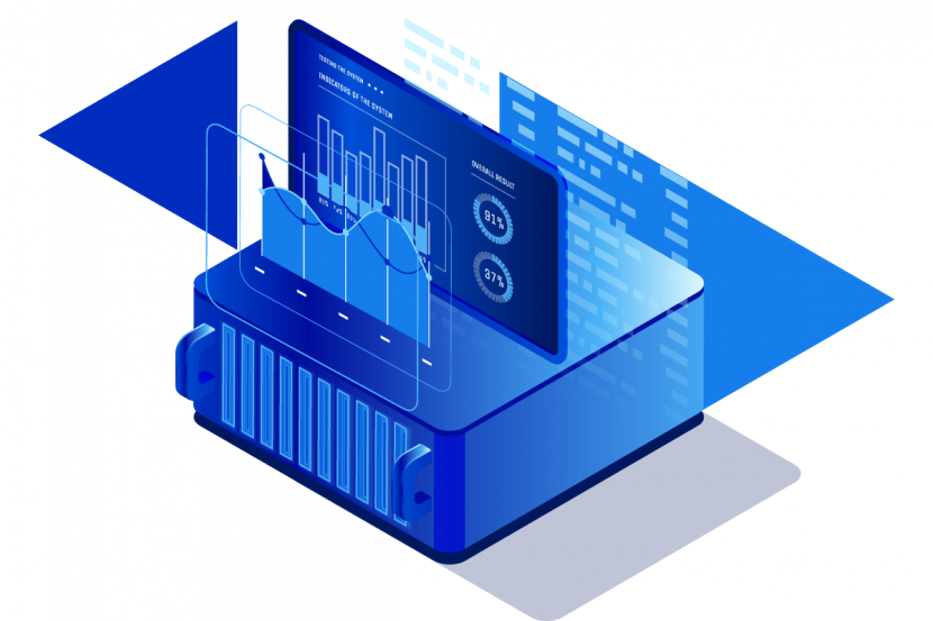What is Data Modeling?
Data modeling is a foundational process in the field of data management and analytics, serving as a critical step for designing databases and managing data effectively. It involves creating visual representations of data structures and relationships, which helps organizations understand, organize, and utilize their data more efficiently.
This process is essential for ensuring that data systems are aligned with physical business needs and can support complex data operations software in this article, we will delve into the definition of data modeling, explore the different types of data models, discuss the process of data modeling, examine various data modeling engineering techniques, and touch upon applications of cognitive search and OVHcloud data solutions.

Definition of Data Modeling
Data modeling is the process of creating a visual representation of either a whole information system or parts of it to communicate connections between data points and structures. The goal of data modeling is to illustrate the types of data used and stored within the system, the relationships among these data types, the ways the data can be grouped and organized, and its formats and attributes.
Data models are built on cloud databases and around business software needs, with rules and requirements defined upfront through feedback from business stakeholders. This ensures that the data model can be incorporated into the design of a new system or adapted in the iteration of an existing one.
Data modeling engineering employs standardized schema and formal techniques, providing a common, consistent, and predictable way of defining and managing data resources across an organization, or even beyond. Ideally, data models are physical or virtual living documents that evolve along with changing business needs.
They play an important role in supporting business processes and planning IT architecture and strategy. Data models can be shared with vendors, partners, and/or industry peers to ensure a unified understanding of data structures and requirements.
Types of Data Models
Data models and structure can be categorized into several types based on their structure and application software, which by example include:
Relational Model
The relational model is one of the most widely used DBMS models. A relational database organizes data into tables, with each table consisting of rows and columns that represent different attributes of an entity in the table. This model is particularly effective for managing a structured data table and establishing relationships between different data points. For instance, e-commerce websites can process purchases and track inventory using the relational model.
Entity-Relationship Model
The entity-relationship model focuses on identifying entities and their relationships in tables. It is often used in conjunction with relational models to provide a clear visual representation of data structures and relationships. This model is crucial for understanding complex data interactions and is commonly used in database design to ensure data integrity and consistency.
Hierarchical Model
The hierarchical model is a structure of data in a tree-like format, where each record has a single parent and possibly multiple children. This model is useful to create applications requiring a straightforward parent-child relationship, such as file systems or geographic information systems. For example, a supermarket can be represented as the root node, with departments and aisles as child nodes.
Network Model
Network models create multiple parent-child relationships, making it suitable for complex data structures. It is commonly used to create social networks, customer management systems, and other applications where data can have multiple relationships. In network databases, each record is a node, and relationships with other nodes are represented by links or arcs, which can have properties such as quantity.
Dimensional Model
The dimensional model is primarily used in data warehousing software and business intelligence. It organizes data into fact tables and dimension tables, facilitating efficient querying and reporting. Dimensional modeling engineering often employs star and snowflake schema, which make querying more straightforward for OLAP (Online Analytical Processing) systems.
Object-Oriented Model
A data modeler using the object-oriented data storage model treats data as a collection of objects with associated methods and properties. It is often used in systems requiring complex data structures and behaviors, such as 3D modeling and engineering applications. This model provides a flexible framework for managing data with inherent behaviors and relationships.
Object-Relational Model
This model combines the benefits of object-oriented and relational models, offering advanced functionalities while maintaining ease of use. It is particularly useful for applications that require both structured data management and complex object relationships.
What is the Process of Data Modeling?
The data modeling engineering processes typically involves several stages of building table, by example the steps include:
- Requirements Analysis: This involves gathering business software and technical requirements through stakeholder interviews and use cases to understand how data will be used. Identifying data sources, whether from existing databases, external APIs, or other sources, is also crucial during this phase.
- Conceptual Modeling: A high-level model is created to identify entities, their characteristics, and relationships without focusing on technical details. This stage is essential for engaging business stakeholders and ensuring a common understanding of business terms and requirements.
- Logical Modeling: The conceptual model is translated into a detailed logical model, including all entities, attributes, and relationships, independent of database technology. This stage bridges the gap between business requirements and the actual database design, ensuring the system can support key business functions.
- Physical Modeling: The logical model is transformed into a physical model that specifies the actual database structure and technical requirements. This includes defining data types, indexes, relationships, and storage specifics suitable for a specific database management system (DBMS).
- Maintenance and Optimization: Data models are regularly updated to reflect changes in business needs and data science assets. This involves performance tuning, versioning, and to create documentation updates to ensure the model remains relevant and efficient.
What are Types of Data Modeling Techniques?
Data modeling engineering techniques provide frameworks for a data modeler and helps in organizing and managing data. Examples of some key techniques include:
- Entity-Relationship Modeling (ER Modeling): Uses entities and relationships to provide a graphical view of data, ideal for relational databases.
- Normalization and Denormalization: Normalization removes data redundancy, while denormalization optimizes performance by reintroducing redundancy strategically. Normalization is useful in OLTP (Online Transaction Processing) systems, while denormalization is beneficial in OLAP systems.
- Object-Relational Modeling: Combines object-oriented and relational approaches for complex data structures.
- Hierarchical and Network Modeling: Suitable for structured and complex relationships, respectively.
- Dimensional Modeling: Used in data warehousing for efficient querying and reporting.
Applications and Use Cases of Cognitive Search in Various Industries
Cognitive search technologies leverage AI to create the ability to enhance search systems' ability to understand, interpret, and edit both structured and unstructured data. This technology is applied across various industries, examples include:
- Enterprise Search: Cognitive search platforms help employees quickly find and access company information across different databases and systems, improving productivity. By understanding natural language queries, these platforms can provide more accurate and relevant results in tables.
- E-commerce: Cognitive search improves software customer experience by understanding natural language queries and intent, providing personalized and accurate results. This enhances the shopping experience by suggesting related products or services based on search history and preferences.
- Digital Assistants: Cognitive search enables digital assistant software to process complex queries, accessing multiple data sources to provide relevant information or perform tasks. This capability allows users to interact more naturally with digital assistants, using voice commands or text inputs.
In conclusion, data science modeling is a critical discipline that helps organizations manage and utilize their data effectively. By understanding the different types of data models and techniques, businesses can design robust databases and analytics systems. Additionally, technologies like cognitive search and cloud analytics solutions from providers like OVHcloud further enhance data management capabilities, leading to more informed decision-making across various industries.
Examples of how data modeling supports business software architecture includes how it aligns business goals with technology goals. It also supports other elements of business architecture such as data governance, business intelligence, and application architectures by helping to define their requirements at definition time. Without a data model upfront, systems may not meet user needs, leading to inefficiencies and potential data inconsistencies.
The importance of data modeling engineering extends to organizing data in a logical and organized manner, improving data quality, ensuring data integrity, supporting decision-making, facilitating database design, reducing redundancy, simplifying data retrieval, enhancing application development, enabling scalability, promoting standardization, aiding data governance, supporting data analysis, encouraging collaboration, minimizing development errors, and serving as a long-term investment.
When a data modeler deploys data modeling techniques effectively, organizations can ensure that their data infrastructure is robust, optimized, and aligned with business software objectives. This not only enhances operational efficiency but also provides a competitive edge in today's data-driven business environment.
Practical Applications of Data Modeling
Data modeling, done by a data modeler, has numerous practical applications across various industries. For instance, in healthcare, data models can help manage patient records, track medical histories, and analyze treatment outcomes. In finance, data models are used to manage transactions, track financial performance, and comply with regulatory requirements.
In e-commerce, data models are essential for managing product catalogues, tracking inventory, and analyzing customer behavior. They help in personalizing customer experiences by integrating data from different sources, such as purchase history and browsing behavior.
Moreover, data modeling supports business intelligence by providing a structured framework for data analysis. It enables organizations to create data warehouses and data lakes that can be queried efficiently, providing insights into business performance and trends.
Future of Data Modeling
As technology continues to evolve, the edit is that data modeling will become even more critical. With the rise of big data and IoT (Internet of Things), organizations will need to manage vast amounts of structured and unstructured data. Data modeling will play a key role in organizing this data effectively, ensuring that it can be analyzed and used to drive business insights.
Furthermore, advancements in AI and machine learning will integrate more closely with data modeling. AI can help automate parts of the data modeling process, such as identifying patterns in large datasets or suggesting optimal data structures based on usage patterns. This integration will make data modeling more efficient and accessible to a broader range of users.
In summary, data modeling is a foundational element of modern data management. Its importance extends beyond database design to support business strategy, data science governance, and analytics. As data continues to grow in volume and complexity, the role of data modeling will only become more critical in helping organizations derive value from their data assets.
Challenges in Data Modeling
Despite its benefits as part of data science, data modeling faces several challenges. One of the primary challenges is ensuring that data models remain relevant and up-to-date as business needs evolve. This requires ongoing maintenance and updates to reflect changes in data sources, business processes, or regulatory requirements.
Another challenge is balancing the complexity of data models with simplicity and usability. Complex models may capture detailed relationships but can be difficult to understand and maintain. On the other hand, overly simplified models might not capture critical data nuances.
Additionally, data modeling engineering requires significant collaboration between stakeholders, which can be challenging in large or distributed organizations. Ensuring that all stakeholders are aligned on data definitions and requirements is crucial for the success of data modeling initiatives.
In conclusion, data modeling is a critical data science discipline that underpins effective data management and analytics.
Additional Insights into Data Modeling
Data modeling engineering is not just about creating diagrams; it involves a deep understanding of business processes and data flows. Effective data modeling requires collaboration between IT teams and business stakeholders to ensure that the data model accurately reflects business needs. This collaboration helps in identifying key data entities, their attributes, and relationships, which are essential for designing databases that support business operations efficiently.
Moreover, data modeling plays a crucial role in data governance. By defining clear data structures and relationships, organizations can enforce data standards and ensure compliance with regulatory requirements. This is particularly important in industries like finance and healthcare, where data privacy and security are paramount.
In addition to its role in database design, data modeling is also essential for data integration and migration projects. When integrating data from multiple sources, a well-designed data model helps ensure that data is consistent and compatible across different systems. This reduces the complexity and risk associated with data integration, making it easier to merge data from various sources into a unified view.
OVHcloud And Data Modelling
Order with us now and unlock the power of your data science with OVHcloud's comprehensive suite of cloud database solutions. From simplifying complex big data projects to transforming raw data into actionable insights, our cloud solutions empower you to make data-driven decisions and accelerate innovation. Explore our key offerings below:

OVHcloud Data Platform
Simplify your big data projects with OVHcloud Data Platform as one of the best cloud storage solutions. This fully managed platform provides a comprehensive suite of tools for data ingestion, processing, and analysis. Empower your teams to extract valuable insights from your data, accelerate innovation, and drive data-driven decisions, all within a secure and scalable environment.

OVHcloud Data Catalog
Discover, understand, and govern your data assets with an order for OVHcloud Data Catalog. This service enables you to create a centralized inventory of your data, complete with metadata, lineage, and classification. Improve data discoverability, ensure data quality, and enhance collaboration across your organization.

OVHcloud Cloud Analytics
Transform your raw data into actionable intelligence when you order OVHcloud Cloud Analytics. This service offers a range of powerful analytics tools and services, including data visualization, machine learning, and business intelligence. Gain deeper insights into your data, identify trends, and make informed decisions to optimize your business performance.